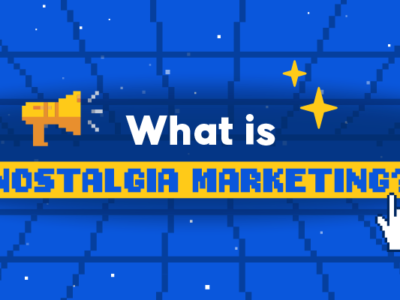As a blogger, content marketer, or online business owner, you generate content for a reason, right? You want it to engage the audience and convert into ROI and extra profit.
But there’s a catch:
People read your blog posts and… nothing! While you’re expecting them to click a link and download your lead magnet, they scan your text, smile, or (what’s even worse) shrug their shoulders, and go away.
Such fails happen when your blog post doesn’t involve any desired action to evoke from readers, therefore missing all the necessary hooks you could use to control their reaction.
In this article, we’ll learn five core reactions your blog posts can trigger from readers and reveal writing tricks on how to make it happen, depending on your content marketing goals.
5 Desired Actions of Marketing Blog Posts
First and foremost, what is a blog post’s desired action?
The desired action (a target effect) of a text is how it affects the reader. Different variations are possible to preplan: Your text can trigger a definite act, teach new things, entertain, or make readers wrap their mind around something.
Speaking of blogging for business and depending on what you want readers to take from your post, its desired action can be one of the following:
- Do something (advertising blog posts with direct calls to action)
- Feel something (brand storytelling)
- Learn something (informative and educational content)
- Relax and have some fun (entertaining blog posts)
- Make sure the author is competent (blog posts that build authority)
Desired actions can complement each other. For example, your blog post can teach, entertain, and at the same time, build your brand’s authority and evoke emotions, etc. It’s close to impossible to write a guide without showcasing your expertise. Or, you can’t write about a new feature of your product and “forget” to ask readers to subscribe to your newsletters.
But if you want to control readers’ reaction to your content and effect the result, please do your best to determine its core desired action before you start writing.
Why Consider Desired Actions When Writing Blog Posts
A desired action determines a reader’s behavior and ultimately inures to your (author’s) benefit. When considering it before writing your blog posts, you do the work for the long run through readers’ reactions here and now.
To determine your blog post’s core desired action, use the phrase “that’s why we need.”
- We want to get profit today, so we don’t have time to wait, and that’s why we need to ask readers to buy our online course directly.
- We want more followers in our Facebook group, and that’s why we need to make users emphasize with us and join our community.
- We want our newsletters to stay well-liked, and that’s why we need to tell something interesting in the blog.
- We want to skyrocket likes and shares of our content, and that’s why we need to craft entertaining content that will go viral.
- We want to sell more, and that’s why we need to publish in-depth and expert content to convince readers of our competence.
Along with that, an explicit desired action of your blog post will help you decide on what proven method to choose for its promotion.
OK, let’s say you’ve determined the desired action for your blog post. What writing tricks to use in every single case to control readers’ reactions?
Also Read: Boost Engagement with Facebook Content
1) How to Make Readers Do Something
The most apparent yet useful trick here is a call to action. If you want a reader to do something, tell it straight: buy, download, subscribe, sign up, watch, share — these are the most common CTAs all marketers know and use for years.
Calls-to-action are common to sales content. In blog posts, they can lead readers to believe you want to force them to do something; so, be careful with too salesy CTAs in your articles.
Types of CTA to use in blog posts:
- Blog subscription
- Comment
- Share (Tweet this!)
- In-line CTAs (a link within a blog post to learn more on the topic)
- Bottom-of-the-post CTA (matter-of-factly)
Along with blog posts, this desired action works on landing pages, product descriptions on e-commerce websites, ads on social media, event announcements, etc.
2) How to Make Readers Feel Something
Emotions are the most potent trigger for action. If you evoke a particular feeling in a reader, they’ll do everything the way you want. In this case, a core desired action of your blog post will be sparking the emotions.
For that, you can:
- Touch a nerve, move them to pity.
- Throw discredit on some traditional or someone’s personal opinion.
- Tell about the possible danger, and how your brand can help to prevent it.
- Evoke a feeling of pride or solidarity. Or, vice versa, hurt other people’s ego or values.
- Make them laugh.
When blogging for business, authors “manipulate” with five core emotions in content:
- Guilt (you need to change something)
- Fear (something awful will happen if you don’t do that)
- Love (do this for your dearest and nearest ones)
- Pride (you’ll stand out of the crowd if you do (or buy) this)
- Greed (earn more with fewer efforts or less money)
The best writing trick here is storytelling.
Why?
The human brain retains 70% of information through stories but only 10% from data and statistics. Stories create a personal connection, activating brain areas responsible for experiences. It gives readers an emotional response and makes them emphasize as well as remember your brand.
Along with blog posts, you can appeal to this desired action in your website news, social media posts, comments you write on other blogs, video ads, and more.
3) How to Make Readers Learn Something
Your goal here is to give some new knowledge to readers. Eagerness to learn is a part of the basic human instinct (social):
Being worried about their status, approval, and accomplishments, people crave for knowledge that would help them deal with personal challenges, so the demand for informative and educational content never ends. Addressing these challenges and providing tools to overcome them, you’ll build trust and connection between your brand and a consumer.
Educational content is all about how-to’s, step-by-step instructions, infographics, guides, case studies, lists, etc.
Getting valuable info from your blog regularly, a reader gets used to it, becomes your fan, and subscribes to your social media and newsletters for fear of missing the news.
To hold a reader’s attention, not only do you need to consider the quality of your content but also remember about its visual presentation. Format it with the rules of web writing in mind:
- Use short sentences and paragraphs; consider subheadings, bullet points, bolded text.
- Add bucket brigades and transitional words for more interest and better readability.
- Be clear; write the way your audience speaks.
- Break up a text with visuals: images, graphs, GIFs, videos, infographics, etc.
- Use power words.
- Provide a surplus value: citations from influencers, links to authoritative resources, testimonials, downloadable templates, etc.
4) How to Entertain Readers With Your Blog Content
Entertaining content involves and triggers. It’s simple, easy-to-understand, doesn’t require any deep thoughts or brain strain, and everyone (almost!) loves it.
Your blog post with this desired action will allow a reader to relax, and it doesn’t necessarily have to be funny. It can be a personal story of your CEO, for example, or some interactive content (a quiz, a survey, a game, etc.).
The role of such entertaining content for marketing is awareness, loyalty, and virality (likes and shares are guaranteed). Also, it helps build a target audience’s identity with your brand.
Along with blog posts, feel free to use this format in social media and email marketing.
5) How to Build Authority With Your Content
Content marketers use this approach when their global goal is to sell services. The task here is to build a sense of trust in a reader. They write case studies, give and publish interviews, and share insights, creating an image of a knowledgeable person (company) that can solve problems.
This format is perfect for the first acquaintance with the author. You give the impression of being an expert, arousing the audience’s interest. Later, you can reinforce this impression with stellar informative and educational content.
The above example illustrates what neuro copywriting tricks Brian uses in his blog post titles to build authority and trust: impressive numbers, the readiness to share his knowledge and insights, and up-to-point statements.
Some writing tricks to use in subheads and blog post bodies to achieve the same results:
- Ask questions and add quotes.
- Support your arguments with data.
- Use active verbs.
Takeaways
The right desired action of your content helps influence and control readers more carefully. The choice of this action depends on several factors: your target audience, the place of publishing, and the reaction you expect to get from users.
You can’t write a text without planning its target effect. In a best-case scenario, your writing will stay unnoticed, and you’ll spend time and money in vain. In the worst case, it will play against you, hurting your brand reputation and failing your lead generation.
To choose the right desired action for your content piece, you must understand what triggers your prospects.
First, you determine what benefit you want to get. Second, you think about what the reader has to do for it. And finally, you choose the best way to motivate them to do it, expressing that desired action in your content.
Ready to try?






